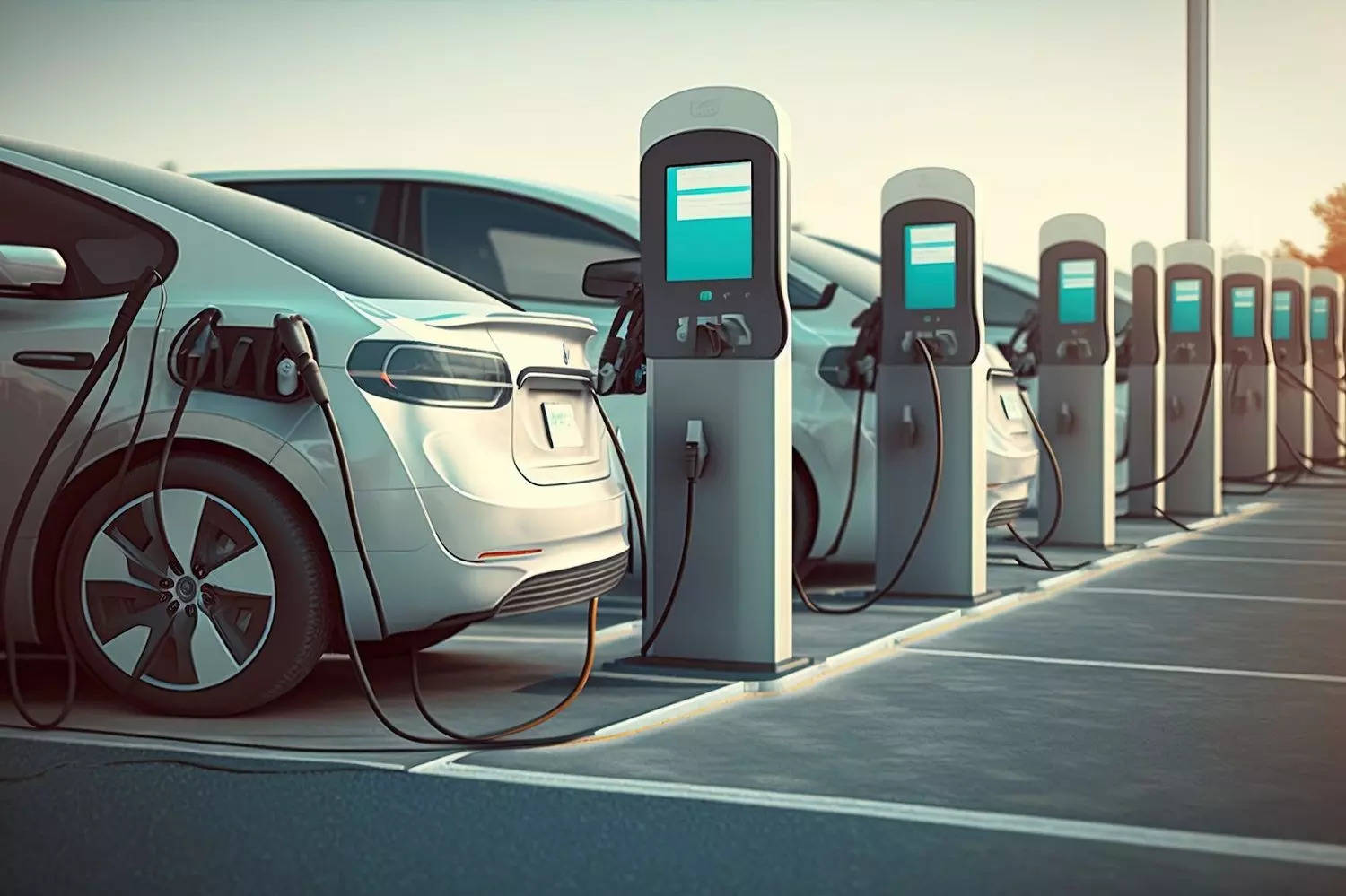
India’s air quality crisis has reached alarming levels, with the post Diwali pollution spike in Delhi and Mumbai recording new lows. The situation is equally grim in smaller towns and cities with places in Meghalaya, Bihar and Rajasthan reporting hazardous levels. It’s increasingly clear that we need lasting solutions and electric vehicles (EVs) emerge as the only way forward as they not only address the need for cleaner transportation but also pave the way for a sustainable future that can finally lift the veil of pollution plaguing our cities.
EVs are increasingly recognized as a pivotal solution to the pressing environmental challenges faced both in India and globally. In India, EV adoption has gained remarkable momentum, fueled by government incentives, technological innovations, and heightened awareness of environmental issues. This year has been a game-changer for EVs with a remarkable 1.5 million units sold in just 10 months—a feat that took a full year to accomplish in 2023. October proved to be a perfect storm for EV sales, with customers eagerly racing to purchase new vehicles. This surge also shows there’s growing consumer awareness regarding the crucial role that EVs play in contributing to clean air.
However, persistent myths and misconceptions about EVs are being perpetuated by certain vested interests to foster uncertainty among potential EV buyers. It’s important to bust these myths so the public has access to accurate, evidence-based information about the advantages of EVs.
Myth 1: EVs are expensive
Fact: EVs are a smart, forward-thinking investment because they are cost-effective over their entire lifecycle. Savings on fuel costs are substantial as charging an EV is significantly cheaper. They also have far fewer moving parts, which means dramatically lower maintenance costs and less frequent repairs. Moreover, as production scales up, manufacturing processes improve and battery prices decline, the upfront cost gap is already closing. Analysts estimate that nearly half of this will come from lower costs for key raw materials. Battery pack prices are projected to fall by an average of 11% per year from 2023 to 2030, according to Nikhil Bhandari, co-head of Goldman Sachs Research’s Asia-Pacific Natural Resources and Clean Energy Research. By choosing EVs, consumers are not only making an environmentally responsible choice but also a financially savvy one.
Myth 2: EVs have low range
Fact: EVs are fast breaking the barriers of range anxiety, making them the right and practical choice. Home charging is the most common method for powering electric cars, and modern EVs now offer impressive ranges that comfortably meet both intra city and intercity needs, with many models delivering 300-500 km of real world range on a single charge. Efficient driving practices can help maximize battery performance even more. For longer journeys, the rapidly expanding network of fast-charging stations makes it easier to recharge quickly and get back on the road with minimal downtime. Manufacturers are actively enhancing battery capacity and efficiency, alongside disclosing real world range, developing advanced range prediction tools and faster charging solutions. Initiatives like PM E-Drive are dedicated to expanding and improving EV charging infrastructure across India, effectively addressing any lingering concerns about range. As charging technology continues to advance and public-charging stations become more prevalent, longer charging times are steadily becoming a thing of the past.
Myth 3: EV batteries don’t last long
Fact: EV batteries are engineered for endurance. These powerhouses are the most significant investment in an EV. Most EV manufacturers offer minimum 8-10 years of warranty on battery and they are designed to last for several years more. Batteries can also be repurposed for other applications as they easily outlast the vehicles they power. Studies show that under optimal conditions, EV batteries could last 20 years or more with an average degradation rate of just 1.8% per year.
That’s not all. The future of EV battery life is even brighter, as experts highlight the potential for second or even third lives. Take the innovative pilot project by JSW MG Motor India which is teaming up with Vision Mechatronics to repurpose damaged EV batteries into large-scale energy storage solutions using a cutting-edge Battery Management System (BMS). Other manufacturers like Tata Motors and Mahindra & Mahindra too have plans for repurposing and responsibly recycling batteries. These initiatives will extend battery life and contribute to a more sustainable energy ecosystem.
Myth 4: EVs are difficult to maintain
Fact: Unlike ICEs with their maze of complex systems like timing belts, exhausts, and intricate transmissions, EVs have streamlined architecture. With just a simple electric motor and significantly fewer components, these vehicles are designed for durability and reliability.
This makes routine maintenance minimal and straightforward, typically involving just tyre rotations, battery coolant checks, and air filter replacements. No need for frequent oil changes either as EVs lack an engine that needs oil for lubrication. In essence, owning an EV means less time spent in the shop and more time enjoying the ride.
Myth 5: EVs are not safe
Fact: EVs are designed with safety at the forefront. Equipped with a sophisticated Battery Management System (BMS), these vehicles continuously monitor battery performance and health. The BMS regulates critical factors such as temperature, charge levels, and voltage, ensuring optimal operation and significantly reducing the risk of overheating and battery fires.
EVs also have safety features that are on par with, if not superior to, ICE vehicles. They are required to meet the same stringent crash safety standards. Moreover, EV battery packs undergo rigorous testing to comply with their own safety standards. Most EVs also come with an Ingress Protection (IP) rating of IP67 or higher, meaning they are well-guarded against dust and water intrusion. This makes EVs safe and reliable in all conditions.
Myth 6: Availability of charging stations
Fact: All EVs come with home charging solutions that are being conveniently used by over 90% of users for regularly charging their vehicles. Plus, over 16,000 public stations offering fast charging facilities are already available across the country including on popular highways. This is several times more than the number of CNG filling stations available nationwide. Further, conducive government incentives and policies, vital for establishing a network of EV charging stations, received a major boost with the recently announced PM E-Drive scheme. It proposes the installation of 22,100 fast chargers for electric four wheelers, 1,800 fast chargers for e-buses and 48,400 fast chargers for electric two and three wheelers, in cities with high EV penetration and on selected highways.
Per a recent news report, the EV charging infrastructure market is poised to expand significantly globally, with revenues projected to surge from USD 25.9B in 2023 to USD 164B by 2030, reflecting a CAGR of approximately 12%. In India, the growth is expected at a 10% CAGR.
Myth 7: EVs are not as powerful as ICE vehicles
Fact: Powered by electric motors, EVs are more commanding as they deliver instant torque, allowing for smooth and exhilarating acceleration right from the start. The immediate power delivery always provides a confident and thrilling driving experience be it on city roads or highways.
Myth 8: EVs are not environment friendly
Fact: EVs are eco-friendly powerhouses as they are non-polluting, zero emission vehicles, do not create any engine noise and convert an impressive 87%–91% of battery energy into motion, far surpassing ICE vehicles, which only utilize 20%–30% of fuel energy. This means more mileage and lower costs, while reducing environmental impact. Several credible studies have shown that even after factoring in battery production, EVs create a significantly lower carbon footprint over their lifecycle. With 42 of the world’s 50 most air polluted cities in India, increasing use of EVs can significantly help in reducing AQI, making breathing easier and living healthier for all. And as India’s energy grid is rapidly shifting to greener and renewable sources, the environmental benefits from EVs will only increase.
Myth 9: EVs are worse for the climate than gasoline cars because of power plant emissions
Fact: EVs are better for the climate. Conventional ICE vehicles produce direct emissions from the tailpipe and during refueling, contributing significantly to air pollution. EVs, on the other hand, generate zero direct emissions because they don’t burn fossil fuels.
According to the latest IEA ‘Global EV Outlook 2024’ report, lifecycle emissions for a medium-sized battery electric car are about half of those for a comparable ICE vehicle fueled by oil. They’re also over 40% lower than hybrid electric vehicles (HEVs) and about 30% lower than plug-in hybrids (PHEVs) over 15 years or around 200,000 km of operation.
As technology rapidly evolves, it’s becoming clear that EVs are not just a trend—they’re practical, cost-effective, and environmentally friendly solutions for everyday transportation. With advancements in battery life, charging infrastructure, and overall performance, more people are embracing the reality that EVs are the future of driving. It’s time to move past misconceptions and recognize the transformative potential of EVs for our roads and our country.
To learn more about the electric vehicle ecosystem and meet the key industry leaders, click here.

